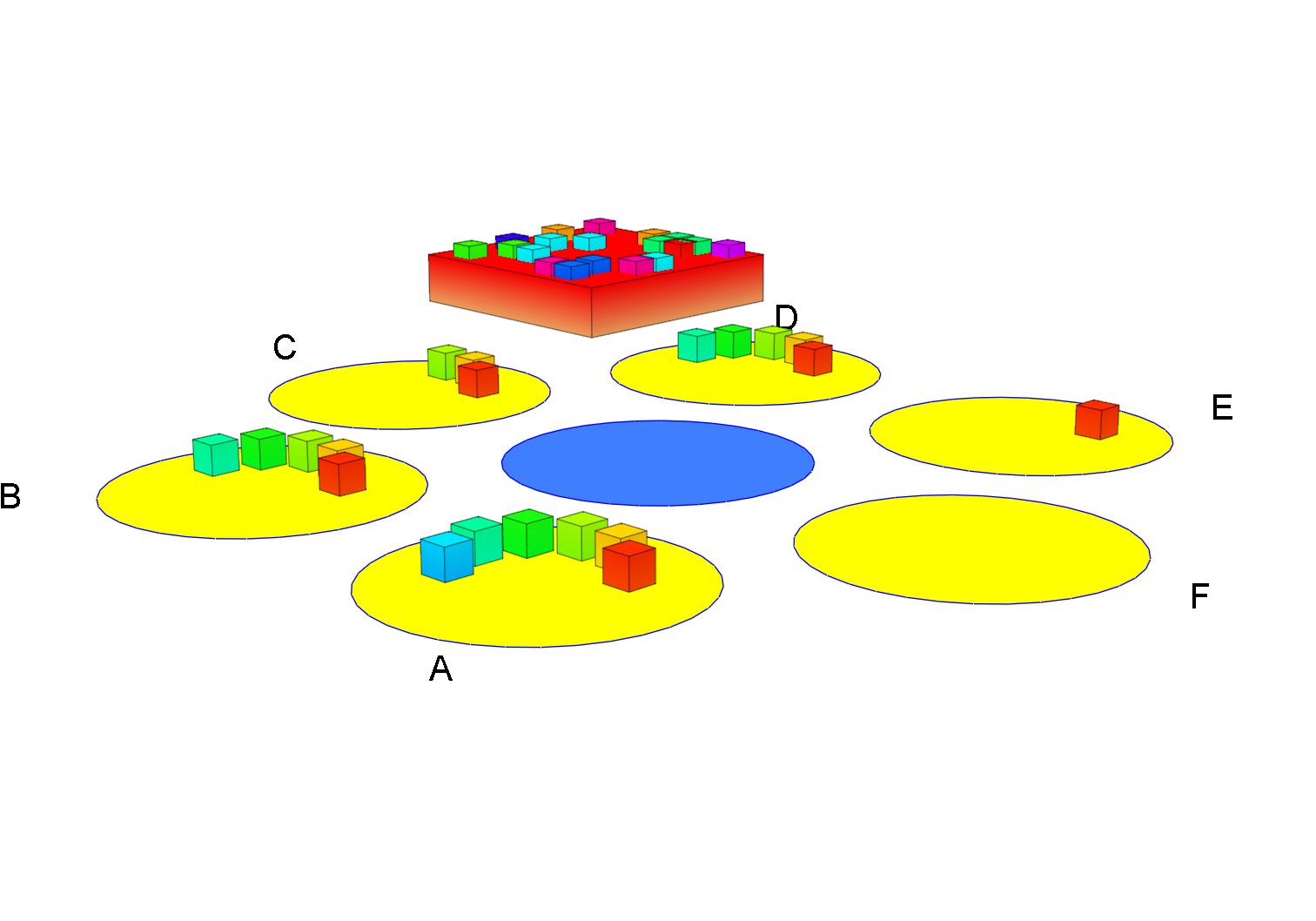
Felix liebt Bauklötze und Rätselspiele. Heute
ordnet er seine Bauklötze in einem Kreis von sechs Häufchen: Er
beginnt mit sechs Steinen auf Haufen A, fünf auf
Haufen B, drei auf Haufen C, fünf auf Haufen D,
einem auf Haufen E und keinem auf Haufen F. Er
erlaubt sich folgende Züge: er sucht sich einen Haufen aus, den er
vergrößern will, sagen wir zum Beispiel den Haufen C. Dann nimmt er
vom Haufen links davon, also Haufen B, einen Stein und vom Haufen
rechts davon, also Haufen D, zweimal einen Stein. Diese drei Steine
legt er zum Haufen C. Dabei legt er jedesmal, wenn er einen Stein
von einem leeren Haufen nehmen müsste, vorher aus seiner
Bauklotzkiste zehn neue an den leeren Platz. Wenn ein Haufen am
Ende des Zuges zehn oder mehr Steine hat, dann packt er zehn Steine
zurück in die Kiste. (So hat jeder Haufen zwischen den Zügen immer
0 bis 9 Steine.) Da die Haufen im Kreis um Felix herumliegen, ist
der Haufen links von A natürlich F, und der rechts von F ist A.
Am Ende hat Felix alle Bausteine in seiner Kiste und alle Haufen
sind leer. Die Frage ist nun: wie oft hat Felix Haufen A ausgwählt,
wie oft Haufen B, ... Er hat allerdings nur die
drittbeste Lösung gefunden.
Falls Du Felix Lösung herausfindest, dann kannst Du Ausschau
nach seiner Bauklotzkiste halten bei
N 50°41.ABC E 7°06.DEF.
Nur für die letzten Meter zum Cache muss man die Wege
verlassen.
Es ist ganz leicht, die Probe zu machen, um festzustellen, ob
die Lösung stimmt. Aber wir wollen mal nicht so sein:
Geochecker.com.
Happy caching!
English translation:
Felix loves wooden blocks and puzzles. Today he
puts his blocks in a circle of six piles: He begins with six
blocks on pile A, five on pile B, three on pile C,
five blocks on D, one on E, and none on pile
F. He allows the following moves: he chooses one pile that he wants
to increase, say, for example, pile C. Then he takes a block from
the pile left to it, so pile B, and twice a stone from the pile
right of it, that is pile D. These three stones he puts to the pile
C. During this whenever he has to take a block from an empty pile
he adds ten new blocks from his block box to the empty pile. If a
pile at the end of the move has ten or more stones, he puts ten
stones back in the box. (So, each pile has 0-9 blocks between the
moves.) As the piles lie in a circle around Felix, the pile left of
A is, of course, F, and the pile right to A is F.
In the end, Felix has all the blocks in his box and all piles
are empty. The question now is: how often has Felix chosen pile A,
how often pile B, ... Actually, he has only found the third-best
solution.
If you find Felix' solution, then you can look for his block box
at N 50°41.ABC E 7°06.DEF.
Only for the last meters to the cache, you have to leave the
path.
It's easy to check if the solution is correct. But let's not be
so mean:
Geochecker.com.
Happy caching!